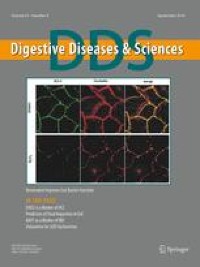Abstract
Background
The relationship between eosinophilic esophagitis (EoE) and achalasia is not completely understood. There have been reports of eosinophilic infiltration of all esophageal layers in patients with achalasia. However, a routine endoscopic biopsy of the muscular layer is usually not feasible. We evaluate the safety and efficacy of muscle layer biopsy during per-oral endoscopic myotomy (POEM) as well as the prevalence of eosinophilic infiltration of the esophageal mucosa and muscular layer in patients with achalasia.
Patients and Methods
All enrolled patients had diagnosed achalasia and had simultaneous biopsies of the muscular layer at the middle esophagus and distal esophageal sphincter as well as the mucosal layer of the proximal and distal esophagus during POEM. All POEM procedures took place from August 2018 to December 2018 or September 2019 to November 2019. Various demographic, disease-related, and procedure-related data were collected from chart review. Eosinophilic infiltration in the biopsy specimen was examined.
Key Results
Twenty consecutive patients (65% female, age range: 21–84) with a pre-procedure Eckardt score of >6 were enrolled during the study period, with the duration of their achalasia ranging from 1 to 32 years. Eighteen patients had clinical symptomatic improvement after POEM, as defined by an Eckardt score <3. Endoscopic examination did not reveal any signs of eosinophilic esophagitis. Pathologic examination of biopsies revealed eosinophilic infiltration in three of 20 patients (15%) in the distal esophageal mucosa (all <15 eosinophils/HPF) and none in the proximal esophageal mucosa. There was no eosinophilic infiltration in the distal esophageal sphincter and the middle esophageal muscle. No complication was noted due to muscle biopsy.
Conclusions and Inferences
Submucosal tunneling during POEM provides a safe access for direct esophageal muscle biopsy. This is the first report of the simultaneous biopsy of the esophageal mucosa and muscle in patients with achalasia. Contrary to all previously published studies, the association of esophageal eosinophilic infiltration and achalasia was not observed in this small sample study. Based on our findings, immune or autoimmune reaction rather than direct eosinophilic infiltration in the muscle is more likely the cause of achalasia.



No comments:
Post a Comment